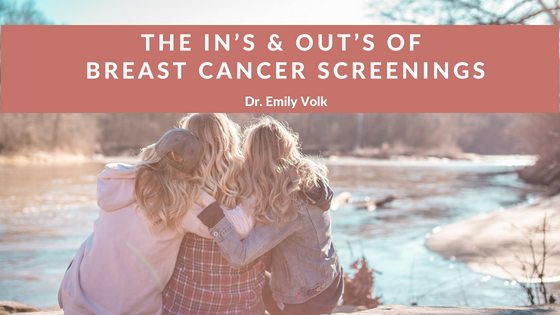Aside from skin, breast cancer is among the most notorious forms of cancer in women. According to Breastcancer.org, in the United States, roughly 1 in 8 women will develop breast cancer over the course of her lifetime. With so many diagnoses, it’s important to remain proactive in checking for signs of breast cancer, as early detection can result in easier treatment. Here’s the “need-to-knows” of breast cancer screenings to ensure you stay on top of your health.
High-Risk Factors
Though it’s important for every woman to consider breast screenings, some women may be more susceptible to the disease than others and need to take even greater precautions.
- Family History- While having a family history of breast or ovarian cancer does not mean you will automatically be diagnosed with breast cancer, having a history of cancer puts you at higher risk than the average woman. Your doctor can determine your level of risk and offer regular screenings to check for early signs.
- Age- Women who are older than 50 are at higher risk for breast cancer than younger women. According to The Telegraph, 81% of breast cancers occur in women 50 years of age and older, and the risk increases along with their age. The U.S. Preventive Services Task Force, or USPSTF, recommends that women between the ages of 50 and 74 seek mammograms every other year. Women between the ages of 40 and 49 should speak to their doctors to determine when they should plan to begin regular mammograms and how often they should receive the screenings.
Screenings
While screenings cannot prevent breast cancer, they can detect early signs when cancer is easier to treat. If you want to get screened, your doctor will be able to help you schedule an appointment.
- Mammogram- Mammograms are breast X-rays that take two pictures of each breast. These screenings are recommended to take place regularly, as they are able to detect early signs of cancer. Currently, mammograms are the most common type of screening and the best way to detect breast cancer early.
- Digital Breast Tomosynthesis (DBT)- DBT is another type of mammogram. Instead of a 2-D X-ray result, DBTs use a rotating X-ray arm to produce 3-D images of the breast.
- Breast Magnetic Resonance Imaging (MRI)- MRIs use magnets and radio waves to capture images of the breast. Often used in conjunction with mammograms, MRIs are used to screen high-risk women.
- Ultrasounds- Ultrasounds use sound waves to produce images of the breast tissue. They are often used in conjunction with mammograms as well.
Many women who see doctors annually are given clinical breast exams. During these exams, doctors search for lumps or changes in the breast with their hands. In addition to clinical breast exams, women can conduct self-exams to check for lumps or inconsistencies between doctor visits and screening appointments. While these exams can indicate concerning symptoms, they should not replace regular clinical or hospital screenings.
For more resources regarding breast cancer diagnoses and screenings, visit the Centers for Disease Control and Prevention website, which provides comprehensive guides and charts.
